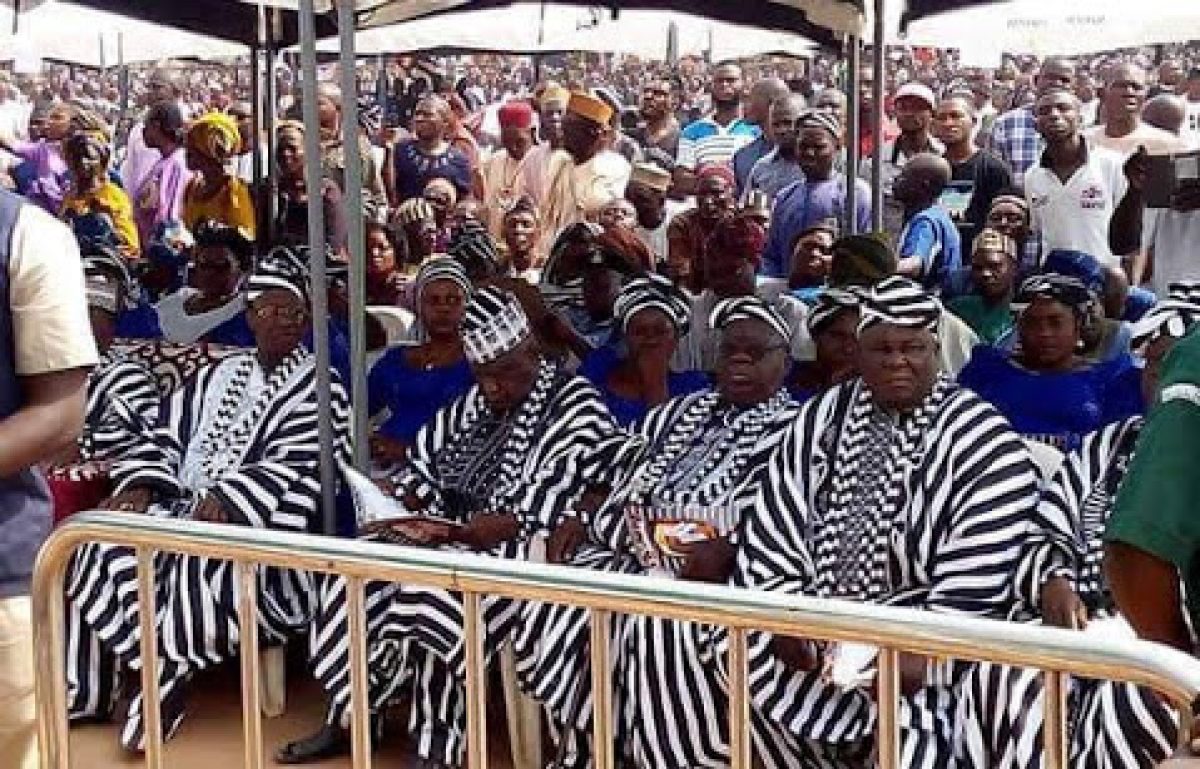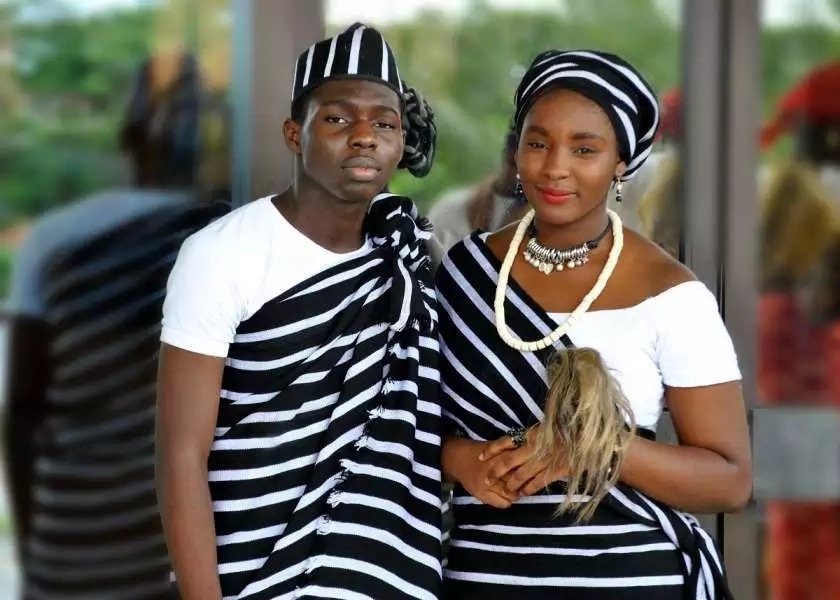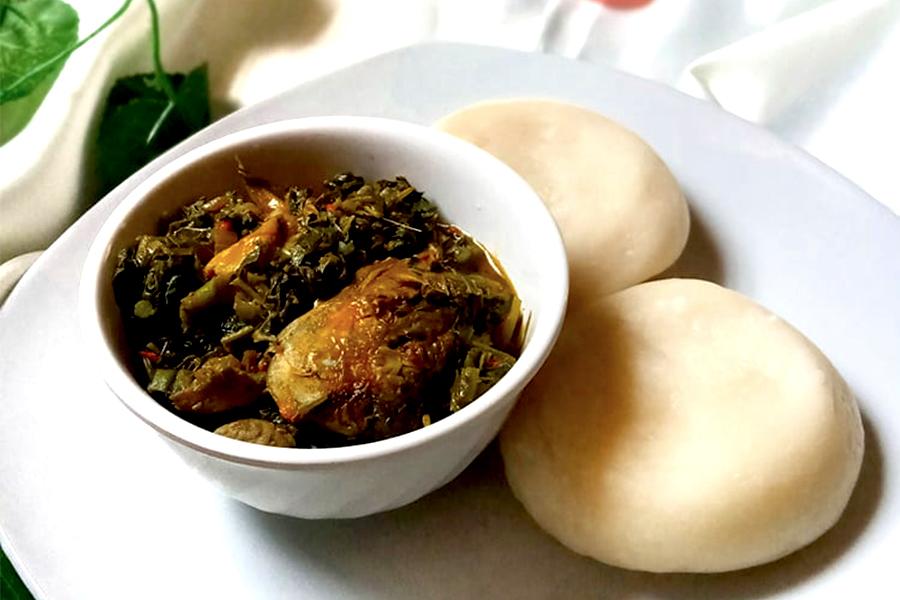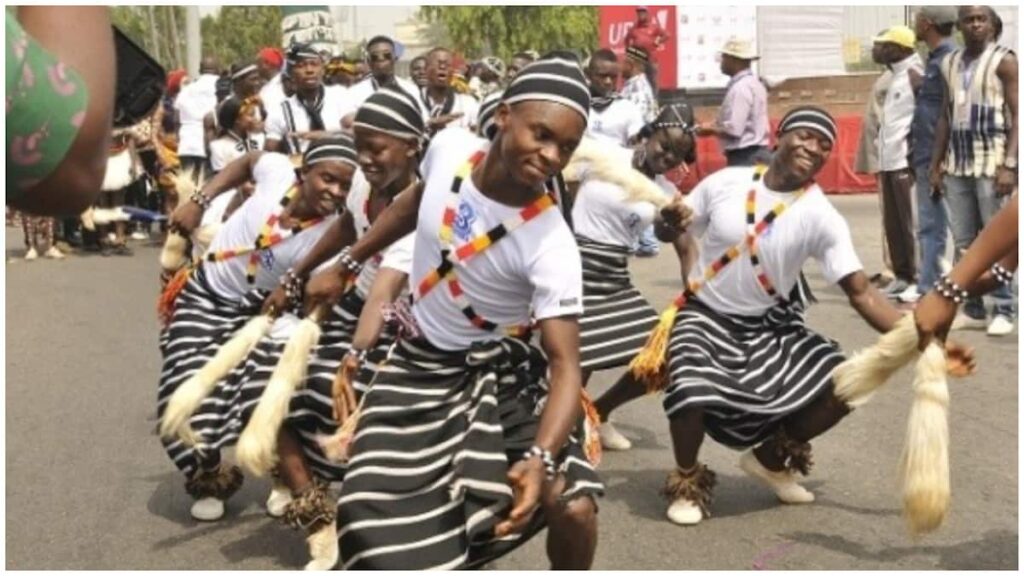Get ready to journey into the rich cultural heritage of the Tiv people of central Nigeria. As a visitor, you’ll get a first-hand glimpse into their ancient rituals, spiritual beliefs, and tight-knit community. The Tiv people have inhabited the Benue River valley for centuries, living off the fertile land as skilled farmers and craftsmen.
While modernity has influenced their way of life, many core traditions have endured. You’ll witness colorful masquerades, experience the rhythm of the drums, and learn the meaning behind their symbolic dances. The Tiv place great importance on community and honoring their ancestors, with elaborate rituals marking all stages of life from birth to death. Their animist religion, steeped in mysticism, continues to shape their worldview.
Tiv People, Their History and Classification

The Tiv or Tiiv are the sixth largest ethnic group in Nigeria, with over 15 million people. They are a Tivoid ethnic group; they constitute about 5% of Nigeria’s overall population. The Fulani tribe refers to the Tiv people as “Munchi.”
The Tiv believe they came from the southeast to their current location. The Tiv are said to have roamed across southern, south-central, and west-central Africa before arriving in the savannah areas of West African Sudan via the River Congo and Cameroon Mountains and settling at Swemkaragbe, a territory bordering Cameroon and Nigeria in the early 1500s CE. They have inhabited the Benue River valley for over 500 years. The Tiv people have a vibrant culture, with many rituals, festivals, and strong beliefs that bind their community.
The Tiv also practice traditional medicine and value traditional healers. Dancing and music play an important role in Tiv’s life, with different dances for different occasions. The Tiv are also skilled craftsmen, producing pottery, baskets, and wood carvings.
The Tiv have a rich cultural heritage that has endured for centuries. Their traditional religion, close-knit communities, and agricultural way of life have shaped a unique identity that continues to this day. Getting a glimpse into Tiv’s traditional culture provides insight into an ancient way of living that still thrives in the modern world.
Tiv Tribe Geographic Distribution
The Tiv people are found majorly in Benue State, Nigeria, with a population of more than 15 million people. The Tiv people occupy the southern part of Benue State in North Central Nigeria. They spread through several local government areas like Gwer, Gwer West, Makurdi, Guma, Ukum, Kwande, Vandeikya and Konshisha.
The Tiv people are also found in Nasarawa state, especially in the Awe, Keana, Doma, and Lafia local government areas. There are also Tiv-speaking people in Taraba state, especially in Bali, Gashaka, Kurmi, Sardauna, and Takum local government areas.
Outside Nigeria, there are Tiv communities in Cameroon, especially in the Northern and Western parts of Cameroon. There are Tiv people in Sudan, the Central African Republic, and Equatorial Guinea. The wide distribution of the Tiv people outside their ancestral home is because of migrations resulting from population pressure in search of fertile agricultural land and pastures for livestock.
Tiv Community
The Tiv people live in small dispersed settlements and value community cohesion. The majority of the Tiv traditionally live in circular huts with mud walls and a cone-shaped, thatched roof. The huts usually have only one room, where an entire extended family eats, sleeps, and socializes. The huts are arranged in small compounds, with spaces in between for cooking, community gatherings, and livestock.
The Tiv organize themselves into patrilineal clans and lineages. They live in compounds made up of several huts belonging to an extended family, with the head of the compound being the eldest man. Respect for elders and communal harmony are highly valued. During downtime, storytelling, dancing, and drinking local brews like burukutu and tsofi are common pastimes that bring Tiv together.
For the Tiv, individual identity is tied to the community. They believe that good fortune and misfortune affect the group, not just individuals. Strong social bonds and mutual support within the clan are paramount. The interests of the community almost always come before individual interests.
Tiv Religious Beliefs and Ritual Practices
The Tiv people hold animistic religious beliefs, worshiping a supreme creator god called Aondo (Sky) and lesser deities associated with natural elements like the sun, moon, and thunder. They believe Aondo created the world and all living things, including ancestral spirits. Some of Tiv’s people are Christians and Muslims.
Ancestor veneration is central to the Tiv religion and community. The Tiv believe ancestors maintain a spiritual connection to the living and can influence their fortunes. They perform rituals to honor and seek favor from ancestors. Family members gather at the ancestral shrine to pray, make offerings of food, palm wine, or kola nuts, and call the names of departed loved ones.
The Tiv also believe in evil spirits that can cause misfortune and illness. Witchcraft and sorcery are feared in Tiv culture. The ‘tsav’ or witch doctor is called upon to detect and destroy witches believed to harm the community. According to the Tiv, certain individuals develop a substance called “Tsav” in their hearts, which functions very much like an actual organ. Tsav is a source of special talent or ability, including musical and creative ability, social and political aptitude, and the capacity to live a long life.
Sacrifices and offerings are made at shrines to deities. The Tiv build shrines in their homes and compounds and at community sites to worship and offer regular devotions to these deities.
Religious rituals, festivals, and shrine devotions bind the Tiv community together and connect them to their ancestral spiritual heritage. Their beliefs provide meaning, explain misfortune, and give them a sense of control over their destiny.
Tiv Tribe’s main Occupation
The main occupation of the Tiv people is farming. Their lives revolve around cultivating crops and tending to livestock. The Tiv are skilled farmers who grow crops like yams, guinea corn, millet, and cassava. Yams and guinea corn make up a large portion of their diet. The Tiv also raise goats, sheep, and cattle.
Farming tasks are shared among family members. Men are primarily responsible for clearing the land, while women plant and harvest the crops. Children often help by chasing away animals and birds that may eat the crops. The Tiv practices shifting cultivation, moving to a new area of land about every 5-10 years to allow the soil to replenish. They clear areas of bush and forest by cutting down vegetation and burning it before planting their crops.
Livestock also plays an important role in Tiv culture. Goats, sheep, and cattle are kept for meat, milk, hides, and manure. The manure is used to fertilize crops. Cattle are especially prized as a sign of wealth and social status. Some Tiv are also skilled craftsmen, producing goods like pottery, baskets, mats, and musical instruments. However, the majority of Tiv remain subsistence farmers, growing and producing only enough for their families and local communities.
Tiv Dialects
Tiv has no dialects. All of the Tiv speakers are able to understand one another. Accents (ham) do exist, though. The Tiv people have a distinct accent that sets them apart from other ethnic groups in Nigeria. Their tonal language, Tiv, is characterized by a series of high and low pitches that give different meanings to the same word according to their tone.
Tiv contains many loan words from the Hausa, Igbo, English, and Jukun languages due to interactions with speakers of those languages. The Tiv alphabet uses Latin characters with additional letters to represent tones. The Tiv accent is present regardless of what language a Tiv person speaks.
Tiv National attire (A’nger)

The Tiv national attire is a black-and-white striped anger. When the Tiv people arrived in their current location centuries ago, they learned that the zebra they hunted for meat and skin for ceremonial dress was not indigenous to the area.
When they learned to weave on the loom, they decided to honor their ancestors by weaving cloth with black-and-white stripes suggestive of zebra skin; this became the preferred outfit. It began as a simple fabric draped over the torso. It is now manufactured into decorated robes, such as those worn by ancient kings and elders from the waist down. Both men and women wear elaborate beaded accessories like necklaces, bracelets, and anklets. Other Tiv attire includes Chado, Lishi, Godo, Tugudu, Gbev-whaa, Deremen, Gbagir, Ivvavtyo
Tiv Main Dishes

The Tiv people have a variety of traditional main dishes. Two of the most well-known are:
Pounded yam (ruam kumen): Made from boiled yam that is pounded into a smooth paste. It is usually eaten with leafy green soups or stews.
Tuwo: A thick porridge usually made from millet, sorghum, or maize flour. Tuwo can be eaten with soups, stews, or sauces made from leafy greens, nuts, and spices. Ittends to be lighter in texture than pounded yam. Both pounded yam and tuwo are staple side dishes in Tiv cuisine.
Other Tiv dishes include; akutoruam kumen, gbev-whaaakpukpa, choko-dafa, anke sha gbaaye, and mumu.
Tiv cuisine incorporates locally grown crops, emphasizing grains, tubers, and leafy green vegetables. Meat, especially beef and chicken, is used sparingly and mainly as a flavoring for soups and stews. Dishes tend to be high in carbohydrates, providing energy for the farming lifestyles common among the Tiv. Tiv popular soups include, tur, vambe, vegetables, ashwe, and atyever. Popular Tiv beverages are, burukutu, and ibyer.
Tiv Music and Dance

The Tiv have a rich musical and dance culture. Common instruments include drums, ilyu, gbande, kakaki, indyer, akya, and rattles. Dances are performed for special occasions like harvests, weddings, and funerals. The Swange and the Cat dance is one of the most popular Tiv dances.
Drama
Kwagh-hir is a performing art form used by the Tiv. It is a sort of masquerade storytelling that makes use of puppetry and sculpted masks. Individuals of the Tiv culture can express themselves through masquerade. The Tiv adopts the persona of an adzov, a spiritual being, in order to conceal their true identity. The identity of the performers is kept a secret; it is only disclosed through each performer’s unique flair and at the conclusion of the show.
Notable people from Tiv
Here are a few notable people from the Tiv Ethnic group:
- Barnabas Gemade, former PDP presidential candidate
- Gen. John Gbor, APGA presidential candidate for the 2019 general elections
- J. S. Tarkaa, politician, human rights activist
- Joseph Tarka, politician, human rights activist
- George Akume, former senate minority leader
- Aper Aku, the first civilian governor of Benue state
Conclusion
And that’s just a glimpse into the rich cultural heritage of the Tiv people. Their traditions, rituals, and community values have endured for generations, providing a strong sense of identity and continuity. Though modernity is bringing change, the Tiv are working to preserve their cultural legacy.
Maybe now you have a better appreciation for the depth and complexity of Tiv’s traditional culture. Their practices may seem unfamiliar, but at their heart, they speak to the same basic human desires we all share to connect with something greater than ourselves, to mark important life passages, and to strengthen the bonds between one another


Discussion about this post